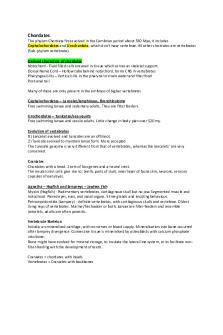Pacing 1-2 - Lecture notes 1-2 PDF

| Title | Pacing 1-2 - Lecture notes 1-2 |
|---|---|
| Course | Field Surveying Laboratory |
| Institution | Stanford University |
| Pages | 3 |
| File Size | 147 KB |
| File Type | |
| Total Downloads | 102 |
| Total Views | 151 |
Summary
Surveying - Pacing ...
Description
PACING
I.
INTRODUCTION:
Pacing provides a convenient means of obtaining approximate distances which is quite useful in surveying. It can be used to obtain a rough check on more accurate measurements made with a tape.
Rules for Accurate Pacing 1. Be systematic. Because the method is crude, it should not be rendered valueless by careless recording of paces, ignoring changes of slope and cover, or by failing to check paced
measurements
measured
distances
against at
every
opportunity.
2. On level ground adopt a pace that can be held all day. This should be your NATURAL STRIDE. Do not try to take an even three-foot step. Some people use a single-step pace instead of the two-step pace. On flat open ground, pace repeatedly over a
measured
distance
until
an
accuracy of 1/100 can be obtained.
3. Pacing in mountainous brushy terrain is not the same as pacing on flat open ground. It is not often that a normal step can be taken in the woods. Thus, one must use other procedures to help, such as estimating by eye the number of paces ahead to some recognizable point. A stick can promote more accurate pacing in brush or on steep slopes. 4. It is suggested that pacing results be regularly recorded and checked against known distances under various conditions. If possible, a pacer should check his pace every day
and preferably both morning and afternoon because of fluctuation as the day wears on.
5. A pace is a measurement of horizontal distance. Regardless of the slope, it is always in terms of horizontal distances.
This fieldwork is used to educate students on the pacing method of measuring distances in the field, as well as, determine its accuracy by comparing them to tape measurements. Pacing is a relatively easy and quick technique used to measure distances in a certain area. Pacing enables surveyors to (1) find the length of their own pace by pacing between two points with a known distance, and (2) measure the distance by pacing and then check it by taping. Nevertheless, an individual’s pace factor changes from one day to the next, and accuracy is limited.
II.
EQUIPMENT: Range poles Steel tape Markers (chalk, or crayons)
III.
PROCEDURE:
A. Determining Pace Factor. 1. Select a straight and level course of at least 90 meters apart using the tape. Designate these end points as A and B. Position the range poles behind these points as markers for correct alignment. Draw a starting line on A and an ending line at B. 2. Walk over the course at a natural pace or gait starting with either heel or toe over the starting line A and count the number of paces to reach ending line B. Make sure to keep the range pole in sight while pacing.
3. For succeeding trials, walk from B to A, then A to B, until 5 trials are completed. Record the number of paces.
4. Compute for the Pace Factor using the formula
Pace Factor =
B. Measuring distance by pacing 1. Define or establish the end points of another level course whose length is to be determined by pacing. Designate these end points as C and D. Position the range poles behind these points as markers for correct alignment.
2. For the first trial, walk over the course from C to D at a natural pace and record the number of paces. Then walk from D to C. Repeat the above procedure until five trials are completed.
3. Record the number of paces and compute for the paced distance using
Paced distance (m) = Pace Factor x Mean number of steps 4. Make an actual taping of the course CD to determine the taped distance.
5. Compute for the relative precision using
Relative Precision =
| | ...
Similar Free PDFs

12 - Lecture notes 12
- 3 Pages

Chapter 12 - Lecture notes 12
- 4 Pages

Lab 12 - Lecture notes 12
- 5 Pages

LEC 12 - Lecture notes 12
- 3 Pages

(12) Mistake - Lecture notes 12
- 8 Pages

Chapter 12 - Lecture notes 12
- 9 Pages

Lecture notes, lecture 12
- 9 Pages

Lecture notes, lecture 12
- 7 Pages

Sachvui - Lecture notes 12
- 271 Pages

Mujadid - Lecture notes 12
- 1 Pages

Lecture 11 + 12 notes
- 16 Pages
Popular Institutions
- Tinajero National High School - Annex
- Politeknik Caltex Riau
- Yokohama City University
- SGT University
- University of Al-Qadisiyah
- Divine Word College of Vigan
- Techniek College Rotterdam
- Universidade de Santiago
- Universiti Teknologi MARA Cawangan Johor Kampus Pasir Gudang
- Poltekkes Kemenkes Yogyakarta
- Baguio City National High School
- Colegio san marcos
- preparatoria uno
- Centro de Bachillerato Tecnológico Industrial y de Servicios No. 107
- Dalian Maritime University
- Quang Trung Secondary School
- Colegio Tecnológico en Informática
- Corporación Regional de Educación Superior
- Grupo CEDVA
- Dar Al Uloom University
- Centro de Estudios Preuniversitarios de la Universidad Nacional de Ingeniería
- 上智大学
- Aakash International School, Nuna Majara
- San Felipe Neri Catholic School
- Kang Chiao International School - New Taipei City
- Misamis Occidental National High School
- Institución Educativa Escuela Normal Juan Ladrilleros
- Kolehiyo ng Pantukan
- Batanes State College
- Instituto Continental
- Sekolah Menengah Kejuruan Kesehatan Kaltara (Tarakan)
- Colegio de La Inmaculada Concepcion - Cebu




